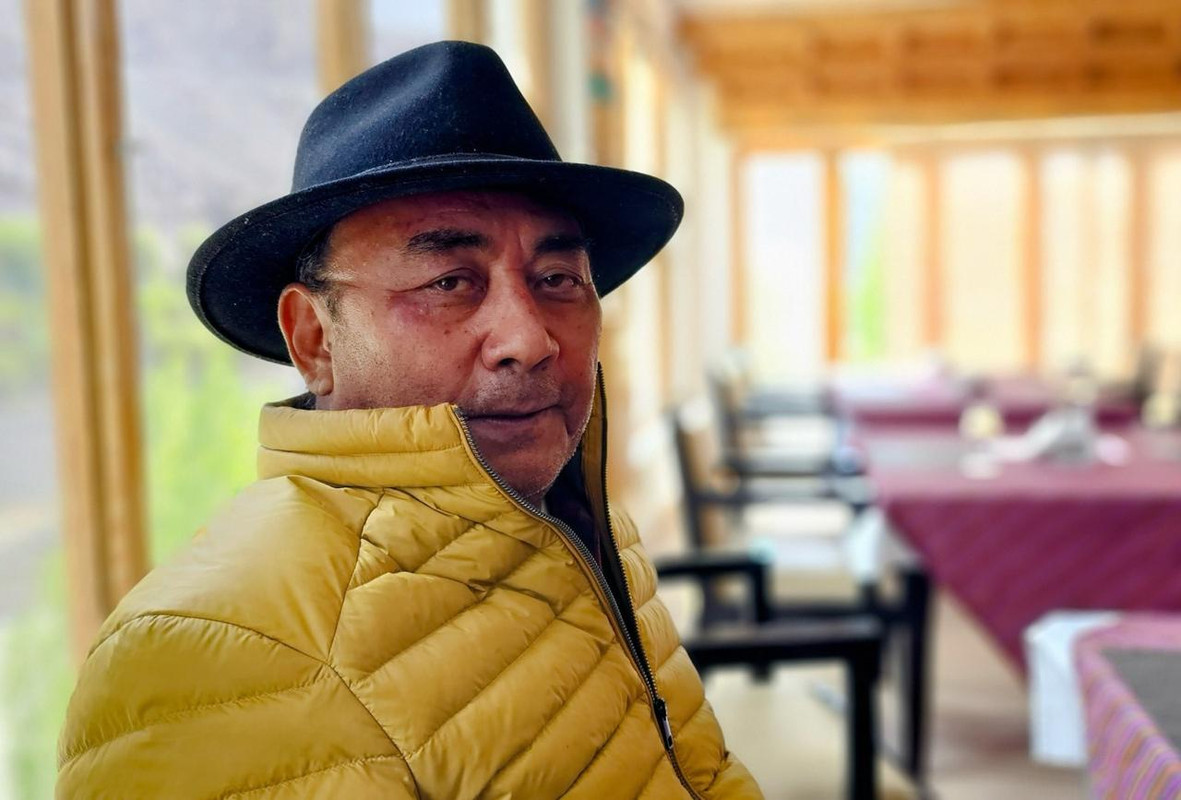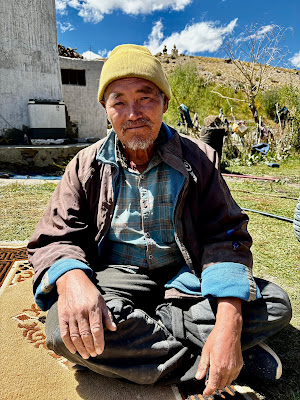According to Sonam Norpel, aged 78, of the Malaps family in Hanupata village, the origins of the village trace back to an accidental discovery by his ancestors. He believes that the early settlers of Hanupata came from the Changthang region. This belief is supported by the presence of the village’s guardian deity, Kajukongta, who is also venerated in parts of Changthang, especially in Shachukul. The first family to settle in Hanupata was the Khangchenpa, followed by the Zingzhukpa and Yokmapa families—each of whom are believed to have migrated from Changthang. Today, the villagers maintain phaspun (ritual kinship ties) with relatives across Zanskar, Changthang, and Leh.
In earlier times, Sonam Norpel’s family had three primary sources of salt:
1. Gifts from Relatives in Lamayuru
The main source was salt gifted by members of the Shutupa family in Lamayuru. The elder of that family used to travel to Tibet specifically to procure salt, which was then shared with kin.
2. Shamma Traders from Takmachik and Tingmosgang
Another source was through occasional visits by Shamma traders from villages like Takmachik and Tingmosgang, who typically arrived in the ninth month. These traders sourced salt either directly from Tibet or indirectly from Changpa traders who frequented the salt markets at Sakti and Chemrey.
There were two kinds of Shamma traders: those who had been to Sakti and those who hadn’t. The latter group only traded in apricots. Besides salt and apricots, Shamma traders were also known to travel further into Zanskar and Lingshed, where they purchased livestock.In Hanupata, the money used to purchase salt and goods often came from the sale of livestock to buyers from Chiktan. Sonam recalls that in his father’s time, a yak would sell for Rs 300—a price that today has risen to around Rs 1,00,000.
3. Local Purchase by Sirilupa Elder
The third source was a local elder from the Sirilupa family in Hanupata, who would personally travel to Sakti to buy salt and bring it back to the village.
Wool was also a traded necessity. While the village produced some wool, it was not sufficient for all needs. Local wool was used primarily for the warp, whereas the softer, high-quality wool from Changthang—purchased in Leh—was used for the weft in weaving.
Trade and Travel Routes
The primary direction of trade and travel for Hanupata villagers was towards Lamayuru and Wanla. Journeys towards Lingshed were rare and usually undertaken for pilgrimage purposes. The most frequented route passed through the Gyapola pass to Wanla, and from there either to Lamayuru or Khaltse. The main reason for visiting Lamayuru was to access the government ration shop.
During the summer, villagers from Photoksar would also use this route, as the usual Rong path would be rendered impassable due to swollen waters.
Another important source of income for Sonam’s family came from weaving traditional baskets known as Tsepo. There were two main varieties:
• Tsepo made from Sed
Collected in the autumn from nearby hills, Sed was soaked in water over the winter and then used for weaving in spring. These baskets were durable and thus more expensive.
• Tsepo made from Chipkyang
Cheaper and less long-lasting, baskets made from Chipkyang sold at a lower price.
As a young man, Sonam would carry about 12 Tsepo baskets to sell in the Tia and Tingmosgang area, fetching roughly Rs 2.50 each. Today, a Sed basket sells for around Rs 100, while the more delicately woven Chipkyang variant fetches up to Rs 800.
.png)









